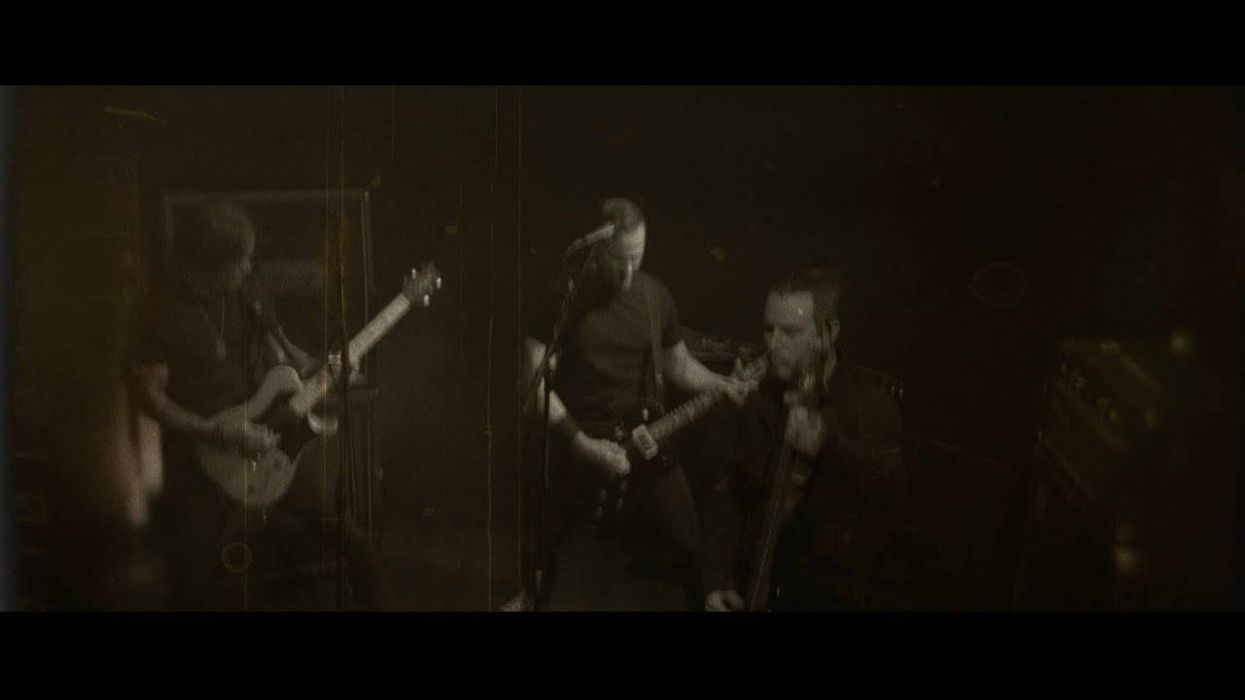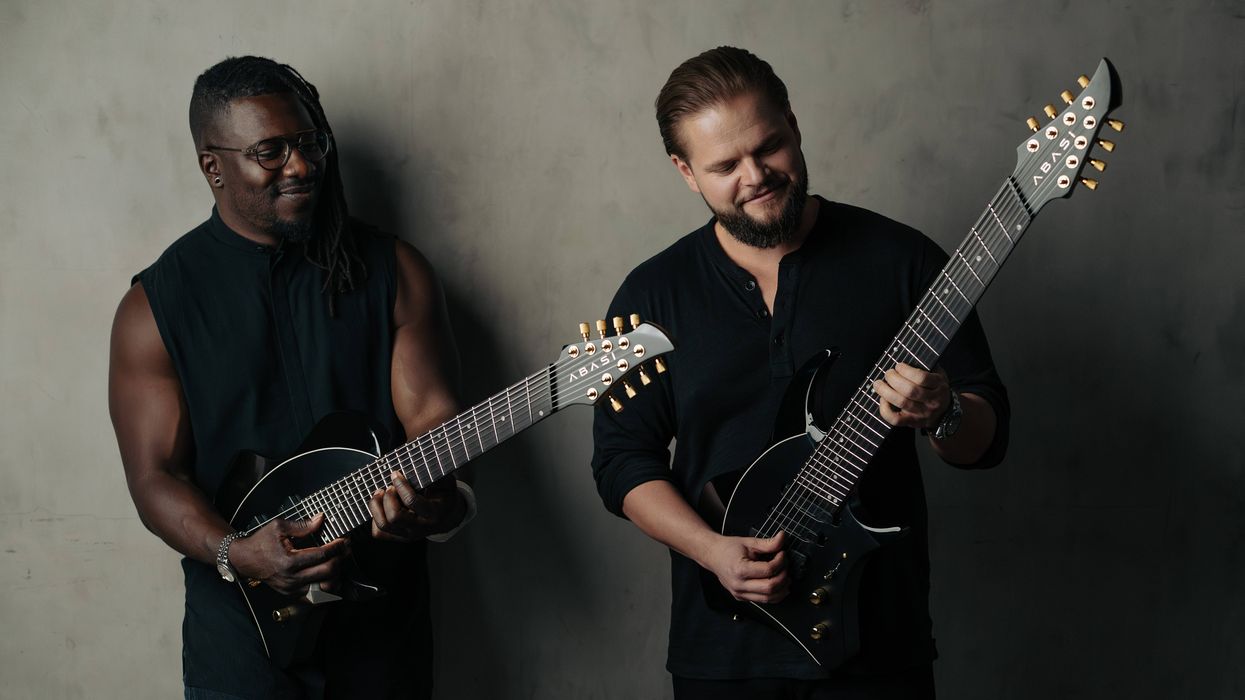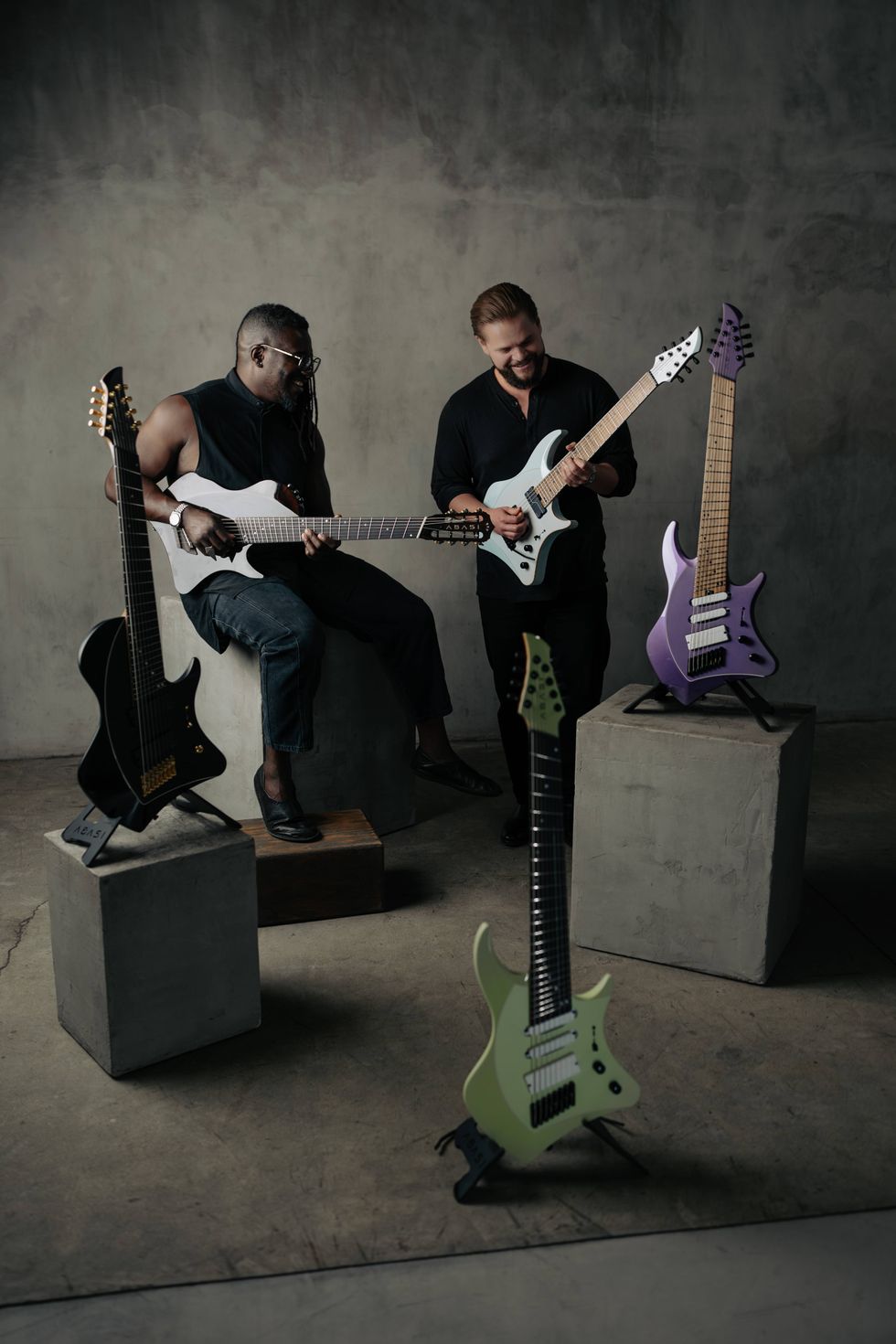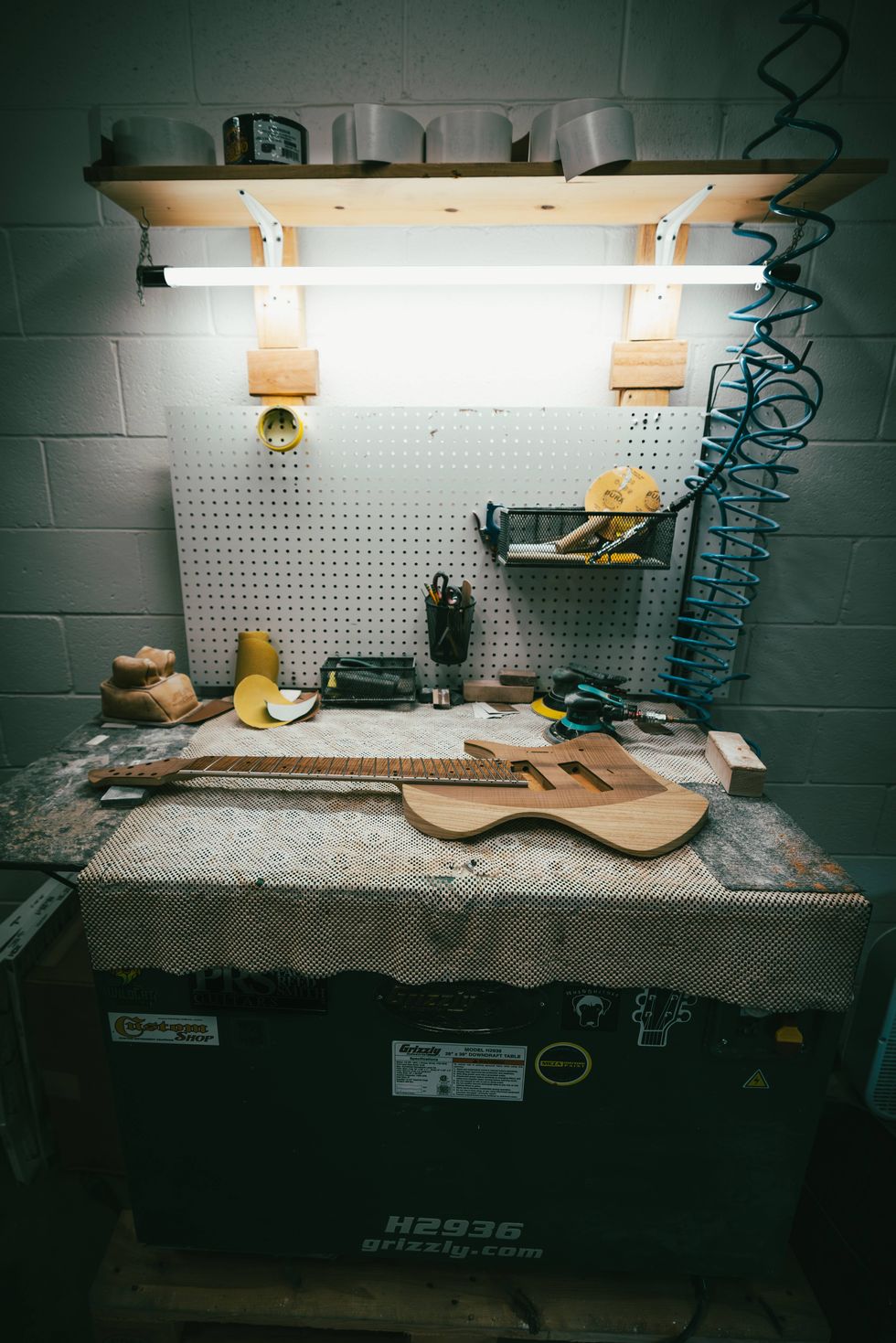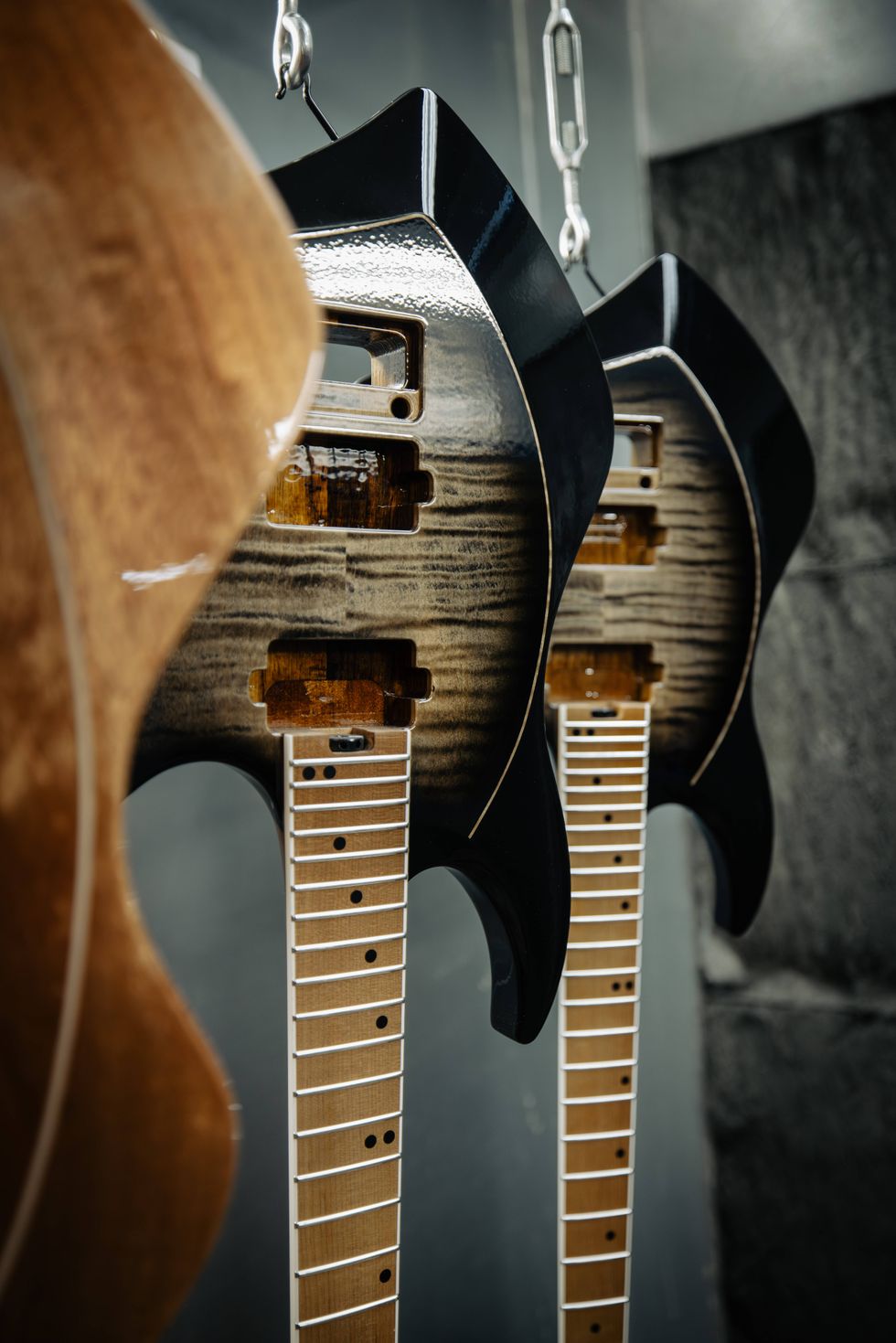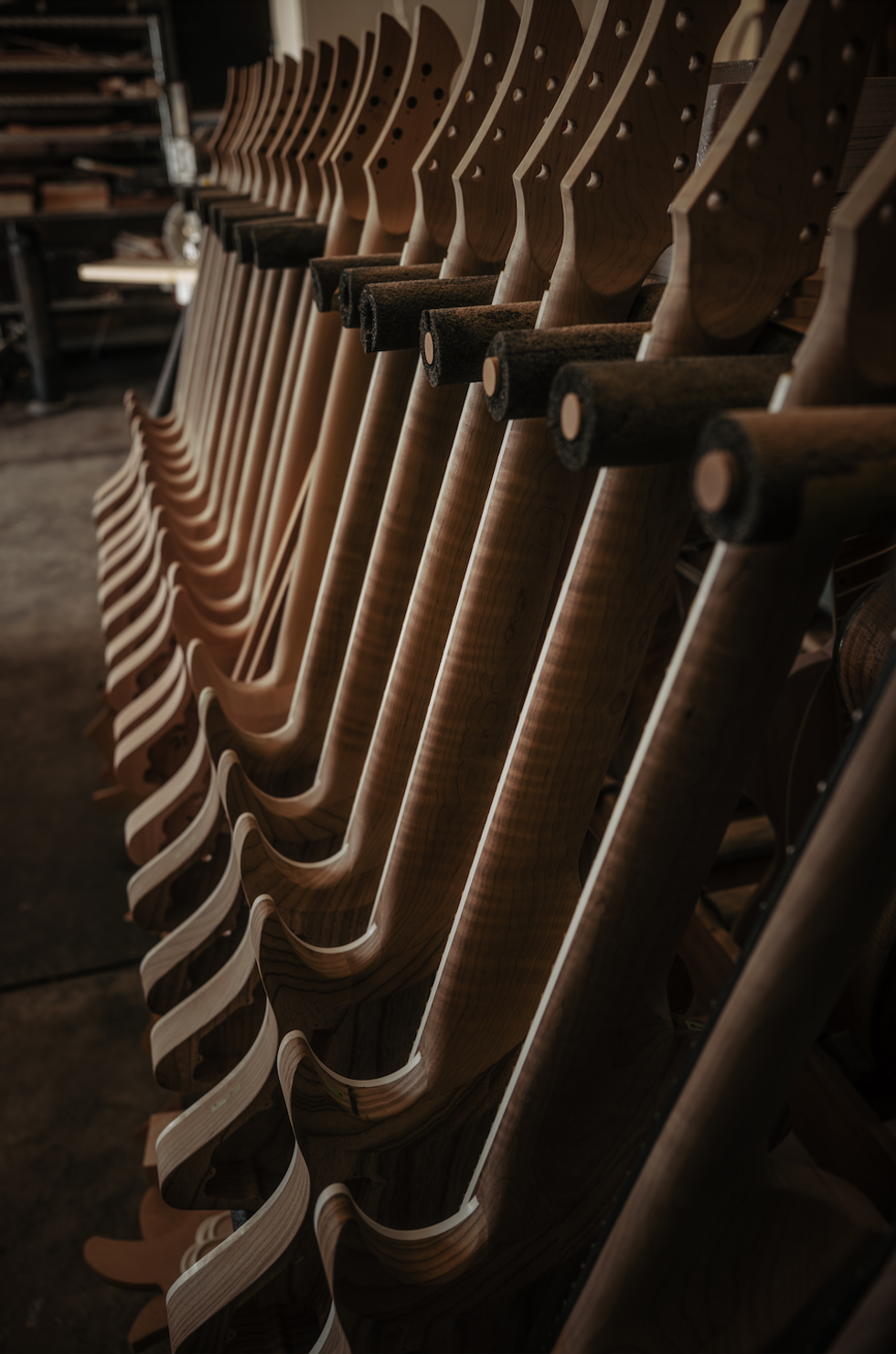Vibrato is as personal as a fingerprint. As guitarists it’s one of the easiest ways to differentiate ourselves and to express emotion. Take a listen to any great player and in a moment you can pick out who they are just by their vibrato. SRV, Hendrix, Angus Young, George Lynch, Van Halen, Uli Roth, Gary Moore, Ace Frehley, Paul Kossoff, Clapton, John Sykes, Santana, Yngwie Malmsteen. The list goes on and on. Each of these players has a highly personal and distinct style, of which vibrato is an integral and important part. Being this is true, why isn’t more emphasis placed on the importance of a quality, stylized vibrato anymore? Maybe it is, but most players tend to gravitate toward modes, picking styles, etc. and don’t spend nearly as much time with vibrato. My first guitar teacher, Jim Bedford, placed vibrato at the very top of the list of things to learn…right away…on my first lesson. Thank you, Jim, I’m so glad you did!
This month I want to take a look and listen to a variety of different ways to approach vibrato. Though there are probably more than just these four, they can be broken down into the following types:
Wrist vibrato
- Technique: Most often with the third finger, supported by the first and second fingers and twisting the wrist.
- Sound: Controlled and solid. Classic
- Pro: If you can master this, your vibrato will be natural
- Con: Not easy. Takes time to perfect this one
- Download example: Wrist_Vibrato.mp3
- Technique: From the joints of the fingers only. Like wiggling your finger
- Sound: Usually a shallower and faster vibrato
- Pro: Fairly easy to do, doesn’t require a lot of strength
- Con: Not the fullest sounding vibrato. Potential of “bee sting” or “mosquito” sound
- Download example: Finger_Vibrato.mp3
- Technique: Lifting the wrist off the neck entirely and pushing the note up and down
- Sound: Very wide vibrato and quite pronounced sounding
- Pro: Can easily vibrato high up the neck without concern of the neck heel getting in the way. Powerful.
- Con: Can get a little “drunken” sounding if not controlled
- Download example: Push_Vibrato.mp3
- Technique: Like a classical guitarist, shortening and lengthening the string by pulling and pushing horizontally.
- Sound: Subtle and mellow. Unobtrusive but effective.
- Pro: Adds movement and air to the note without overbearing it. Can be done anywhere on the neck with any finger.
- Con: Difficult to do correctly because of the nature of steel strings (if you’re on an electric or non-nylon stringed acoustic guitar)
- Download example: Side-to-side_Vibrato.mp3
1. Focus on pitch bending. Start by playing a G on the 12th fret of the G string, then bend that note up to an A (14th fret). Vary the speed in which you go from the G to the A. Start slow, then speed up so you are basically playing an A from the beginning. This will also sharpen your tuning ability so you’re bending to pitch each time. Once you get to the point of being able to accurately hit the A, start the bend silently and strike the string when you feel you’re hitting the A. Check the bend note against the fretted note and you will see how accurate you are. What you’re doing is cementing the feeling of bending accurately to pitch. This allows you to create more dramatic and wider bends that start on a target note, but also bend down in pitch.
2. Vary your vibrato. Not everything has to sound the same! You can mix any type of vibrato to achieve a desired effect at any time. Try using subtle vibratos like the side-to-side or finger vibrato for softer passages and dig in with wider ones to add dynamics to your performance. Also, the speed and width of the vibrato can really heighten the drama of a solo. Listen to Santana if you really want to study nuances and varieties of expression. Being a huge fan of Ace Frehley, I would be missing out on mentioning he didn’t play a lot of notes, but when he did, he meant it. Check out his work on Kiss Alive! for some stunning examples of mixing it up and really wide vibrato.
3. Copy or emulate. Listen to your favorite guitarist and try to cop his vibrato style…it’s harder than you think. After recording over 70 cover tracks and having to learn each player’s styles, I’ve come to a major appreciation of just about every guitarist. Guys like Angus Young have incredible, frantic shaking sounds, while David Gilmore tends to really stretch out a vibrato. Listen to Leslie West on any recording and you’ll hear that he has a very manly and assertive attacking type of vibrato. Some players are smoother, some are light, some are heavy, but they all have a sound. The more you study and practice, the more you can increase your vocabulary.
That’s it for this month. I’ll see you next time around, and remember, it’s not how many notes you play, but how you play them.

